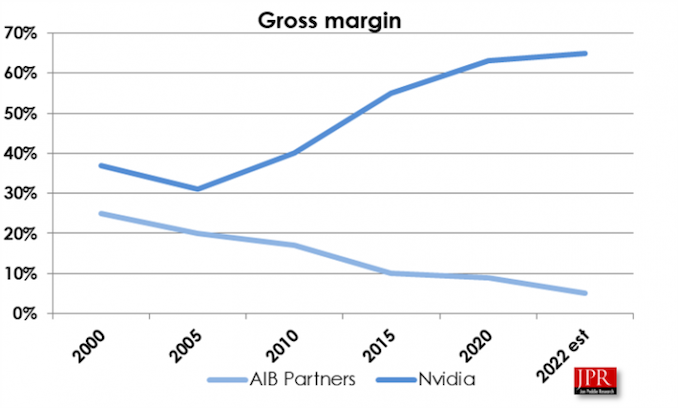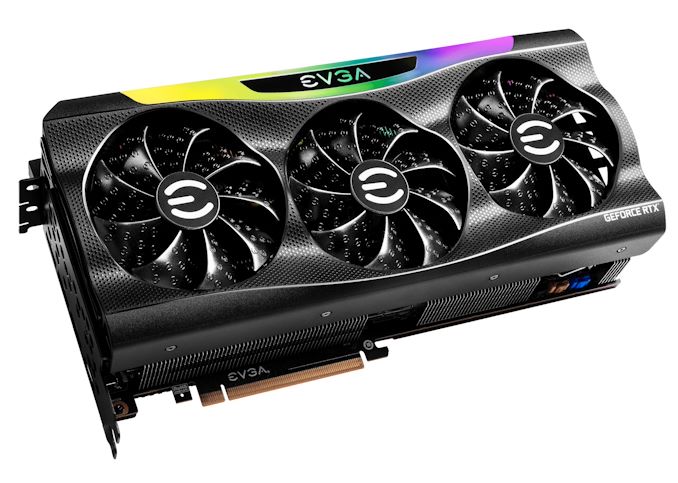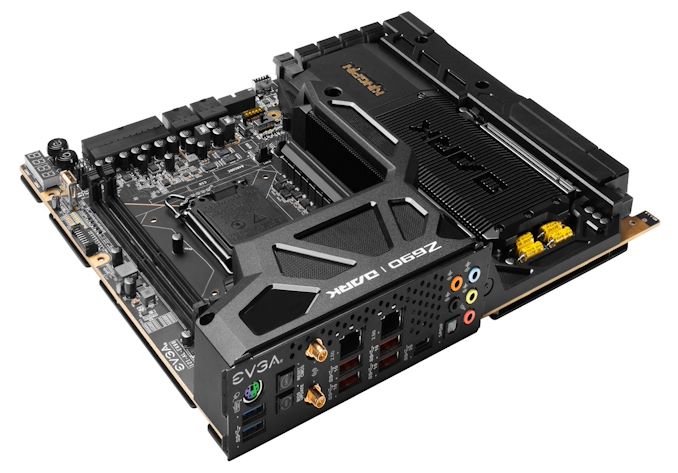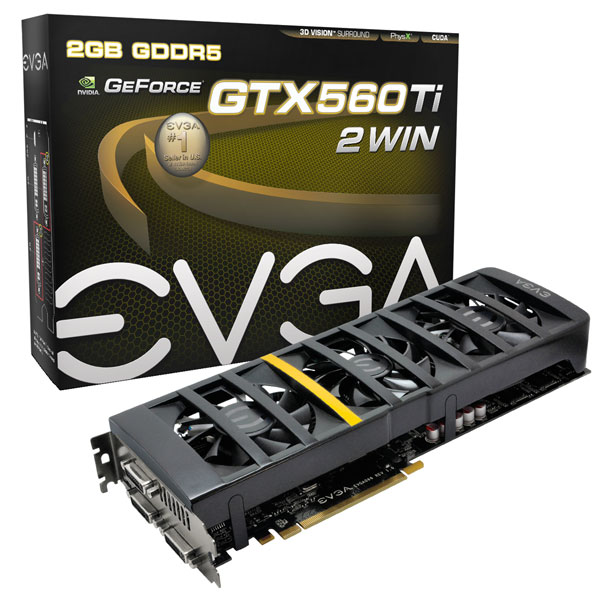
In a transfer that may have vital repercussions for the video card trade in North America and Europe, EVGA immediately has introduced that the corporate is parting methods from NVIDIA. In consequence, the corporate won’t be producing video playing cards based mostly on NVIDIA’s next-generation of GPUs – and received’t be instantly switching allegiance to AMD or Intel, both. Consequently, NVIDIA is shedding their largest add-in board (AIB) in North America, and the broader North American video card market is shedding certainly one of its largest and best-known distributors.
In a transient announcement posted on EVGA’s boards, the corporate outlined their parting from NVIDIA, whereas underscoring that this impacts the next-generation of video playing cards, and that EVGA will proceed to offer current-gen merchandise and assist current clients.
- EVGA won’t carry the following technology graphics playing cards.
- EVGA will proceed to assist the present present technology merchandise.
- EVGA will proceed to offer the present technology merchandise.
EVGA is dedicated to our clients and will proceed to supply gross sales and assist on the present lineup. Additionally, EVGA wish to say thanks to our nice group for the numerous years of assist and enthusiasm for EVGA graphics playing cards.
EVGA Administration
In the meantime, in a briefing attended by Jon Peddie Analysis and Players Nexus, EVGA’s CEO (and founder) Andrew Han laid out some additional particulars concerning the transition. These are each nice items and as I’m not going to easily rehash them level by level, I’d encourage readers on the lookout for a first-hand recounting of the briefing to examine them out.
As specified by each items, EVGA’s parting from NVIDIA comes as the corporate’s relationship with NVIDIA has, in keeping with EVGA, soured over time. Most notably, AIB margins have been slowly shrinking over the previous couple of a long time, with JPR publishing that gross margins on the AIB companions have fallen from 25% in 2000 to 10% in 2015, and lastly an estimated 5% this yr. In the meantime, as NVIDIA has slowly ramped up its personal efforts to instantly promote its Founders Version (reference) video playing cards in Finest Purchase and different retailers, AIBs like EVGA have been put ready of instantly competing with their partner-turned-supplier.

Jon Peddie Analysis: AIB Gross Margins v. NVIDIA Gross Margins
This, in flip, has put EVGA ready the place they’re taking a loss on promoting high-end NVIDIA playing cards, a major shift from what are usually the best margin merchandise bought by video card distributors. And whereas shoppers are benefitting from this within the quick time period by way of cheaper video playing cards, taking a lack of a whole bunch of {dollars} per video card is just not sustainable – neither is it a viable enterprise follow to start with.
On account of these components (and undoubtedly extra tales identified solely between EVGA and NVIDIA) EVGA has opted to half methods from NVIDIA. Which means EVGA won’t be promoting video playing cards based mostly on NVIDIA’s subsequent technology of GPUs, and that EVGA is ramping down manufacturing of current GeForce RTX 30 sequence playing cards. In line with Players Nexus, EVGA expects to expire of current-generation playing cards for retail by the top of the yr, with the corporate setting apart a the rest of these playing cards as spares to honor guarantee obligations.

EVGA RTX 3090 Ti FTW3: A Cash-Shedding Product
Maybe equally notable, EVGA has additionally made it clear that they aren’t instantly partnering with a competing GPU vendor, both. So for the second, no less than, this isn’t going to be a case of EVGA switching allegiances to AMD or Intel. As a substitute, EVGA goes to be out of the video card marketplace for an indefinite time frame. To make sure, in keeping with GN and JPR, the corporate has not utterly closed the door on partnering with one other GPU vendor, however additionally they aren’t actively pursing the matter proper now.
And whereas this marks a large lower to EVGA’s enterprise – Players Nexus stories that video playing cards symbolize 80% of EVGA’s income – EVGA is just not going out of enterprise. The corporate nonetheless has a profitable and well-regarded energy provide enterprise, in addition to a extra area of interest presence in high-end motherboards and gaming peripherals. This additionally signifies that EVGA will proceed supporting its current video card clients even as soon as their remaining video card stockpile runs out, as the corporate nonetheless needs to take care of its sterling status for customer support.
Commentary: A Large Loss for Customers, and a Opening the Door To Vertical Integration
EVGA’s exit from the video card trade represents what is well the largest shift within the retail video card panorama in over a decade. EVGA is just not the primary NVIDIA accomplice to half methods with the corporate – BFG and XFX have been each main NVIDIA companions again within the 00s as nicely – however EVGA’s exit would appear to be the largest but. In line with JPR, EVGA held 40% of the North American retail market, and they have been a large participant in Europe as nicely. EVGA was NVIDIA’s de facto premiere accomplice within the west, each when it comes to complete video card volumes and when it comes to mindshare, with a legacy of manufacturing top quality video playing cards backed with a few of the greatest assist within the trade.
In consequence, EVGA’s exit is an enormous loss for shoppers and video card lovers total. Whereas NVIDIA can (and undoubtedly will) shift allocations over to their remaining AIB companions – Zotac is arguably the following best-known NVIDIA-exclusive vendor in North America – this nonetheless represents a discount in competitors in video card designs, particularly with premium merchandise the place EVGA did a few of their greatest work. And not one of the remaining AIBs have a status for assist that matches EVGA’s (although to make sure, status isn’t essentially consultant of the actual world).

EVGA’s Fast Future: Extra Mobos and PSUs
However the full influence to the buyer market goes to hinge on what NVIDIA does subsequent. From EVGA’s briefing it’s clear that there was some friction between the 2 corporations for fairly a while, so whereas these revelations are new to outsiders, internally the companies have been at odds for some time now. Meaning NVIDIA had loads of time to organize for EVGA’s cut up (they have been first knowledgeable in April), and NVIDIA already has their very own retail operations.
In truth, it’s these retail operations that appear to have led the way in which to what’s occurring immediately. It wasn’t till the Pascal technology/GTX 10 sequence (2016) that NVIDIA started promoting its personal retail playing cards; for the 20 years earlier than that, NVIDIA relied on AIBs to maneuver its merchandise. And even after that time, NVIDIA has purposely restricted its attain by solely promoting playing cards instantly, and later simply by way of Finest Purchase.
Nonetheless, I’ve lengthy puzzled how AIBs have felt about NVIDIA going into competitors with their very own board companions, and now we’ve got a solution, it might appear. EVGA is being pushed out partially by NVIDIA’s direct presence available on the market, with their Founders Version playing cards undercutting EVGA’s merchandise in worth. It’s a relationship that by its very nature places AIBs like EVGA at an obstacle, as NVIDIA has the higher model recognition (all playing cards are NVIIDA playing cards) and a lot of NVIDIA’s R&D is paid for by their inside want for reference playing cards. Which means AIBs face extra prices on prime of shopping for {hardware} from NVIDIA, particularly in the event that they wish to go for premium designs like EVGA has been apt to do.
Briefly, NVIDIA’s determination to instantly promote video playing cards, whether or not intentional or not, is placing the squeeze on AIBs. And NVIDIA-exclusive AIBs like EVGA are essentially the most susceptible.
EVGA’s exit from the video card market, in flip, opens the door to bigger modifications in video card manufacturing and distribution. Video card complexity has elevated considerably over time, and consequently so have the R&D prices at each single stage. GPUs aren’t simply getting extra superior, however they want ever finer PCB routing for reminiscence, extra superior VRMs, bulked up cooling, and extra. It’s not in contrast to the fab market, the place each technology ups the ante on prices and discourages the sort of competitors that ends in decrease costs, decrease margins, and the shortcoming to afford to play within the subsequent technology of the sport.
All of this, in flip, is making vertical integration look extra and extra interesting. Whereas the AIBs in a single type or one other have performed pivotal roles within the video card market for the reason that daybreak of the PC period, providing retail attain and assist that the GPU distributors didn’t have or didn’t wish to hassle with, the precise worth they add is, sadly, diminishing. Video playing cards have gotten so complicated that, particularly on the excessive finish, the very best transfer could very nicely be to stay with the reference designs. All of which additional reduces the worth (and uniqueness) AIBs can present.

EVGA’s Experiments Have not All the time Panned Out…
Briefly, this can be the second the place we see video card manufacturing pivot to having the GPU distributors themselves promote their playing cards, with out using AIBs. So slightly than having 10 video playing cards inside a technology and then quite a few AIB variations thereof – as is the case now with NVIDIA’s GeForce RTX 30 sequence – we’d have one thing extra akin to desktop CPUs the place there’s a dozen or so SKUs offered instantly by the producer.
After all, this has been tried as soon as earlier than, with disastrous outcomes (children, go ask your mother and father about 3dfx), so it’s not by any means a sure-fire factor. However EVGA’s departure opens the door to NVIDIA to swoop in and take again 40% of their retail marketplace for themselves, if that’s what they need.
And if NVIDIA doesn’t fill within the hole, then NVIDIA’s remaining AIBs will little question be blissful to do it. The quantity vacuum from EVGA’s exit means nearly half the NVDIIA North American video card market is up for grabs. It’s a big alternative to reshape that panorama and seize the sort of market share that will take years and years to peel away beneath extra regular circumstances. So though a darkish day for EVGA, alternative knocks for the AIBs who stay.
The following-biggest query at this level is whether or not EVGA will stay within the video card market in any respect. From the Players Nexus and JPR articles it’s clear that EVGA is just not eager on instantly leaping again in with a special accomplice. And, provided that the Ethereum Merge simply went by way of this week and video playing cards throughout the globe have been liberated from their inane toiling (learn: Ethereum is not counting on proof-of-work for blockchain processing), now is just not the time to be making any agency plans.
The broad expectations of the trade are that each one of those former mining playing cards are going to be boomeranging again on to the used video card market, much like the final crypto hangover however in even bigger volumes because of the for much longer interval this most up-to-date mining growth went on. So the video card market goes to be coping with an oversupply as it’s, which means that it’s not going to be a good time to be producing extra video playing cards, as even next-gen playing cards under the flagship stage might be competing with their predecessors.
So even when EVGA does finally choose to get again in to video playing cards – and I hope they do – sitting issues out whereas the market corrects itself and digests the sudden surge of used playing cards is a prudent transfer. How lengthy all of that may take stays to be seen, however as the present state of affairs took years to get into, it received’t be a quick repair coming again out. In time, it might be a feather in both AMD or Intel’s cap to line up EVGA as a accomplice, as they create a stage of sophistication and respect that none of their present AIBs possess. Although it needs to be famous that the general GPU market share is so considerably tilted in NVIDIA’s favor proper now – a 4:1 ratio – that at former manufacturing ranges EVGA might in all probability take in a lot of the AMD retail market presence, one thing AMD’s different AIBs would little question be sad with.
Sadly, this exit additionally underscores how uncovered EVGA is within the video card market, since video card gross sales have been 80% of its income. The corporate has different product traces, however these are smaller in quantity and all in product classes which can be much more commoditized than video playing cards.

Over the Years EVGA Has Gone Large Into PSUs, In Extra Methods Than One
EVGA, for its half, has definitely made efforts to diversify over time, however with restricted success. Virtually a decade in the past I used to be lucky sufficient to be at a enterprise dinner with EVGA and Anand, the place Andrew Han requested for our suggestions on what kinds of merchandise we thought could be good markets for EVGA to increase into. We ended up making a number of ideas, however as immediately’s EVGA product combine reveals, EVGA by no means discovered a second market on the identical order of magnitude as video playing cards. Consequently, I’m not stunned to see Players Nexus report that EVGA is just not planning on increasing into new product classes within the close to future; that’s not one thing they’ve had luck with in higher occasions, by no means thoughts going into this probably recession.
In the end, whereas immediately’s information marks a seismic shift within the video card panorama, it’s additionally the sort of information the place there’s no method to put a optimistic spin on it. The video card market, for its half, will preserve transferring proper alongside with out EVGA, however the market and shoppers are all the more serious for EVGA’s departure. Fortunately, this isn’t EVGA’s eulogy – the corporate remains to be staying in enterprise – however I sincerely hope that once we speak about EVGA sooner or later, it is going to be for extra than simply motherboards and PSUs. Video playing cards are have been EVGA has made its title, and it’s nonetheless the place EVGA does a few of its greatest work.